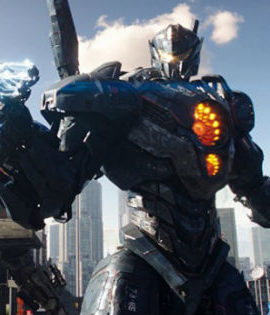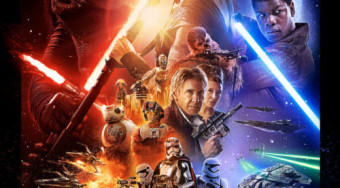Film Reviews

Pacific Rim arrived in theaters five years ago. Although I wasn’t a fan of the feature (you can check out my review here), I admired the unique visuals that director Guillermo del Toro brought to the story. The film’s sequel Pacific Rim: Uprising offers some of the same visual concepts but lacks in most other areas.
John Boyega stars in this follow-up as Jake Pentecost, the son of the original’s Stacker Pentecost (Idris Elba). Ten years have passed since the aliens were defeated and the breach into the alternate dimension was closed. Now, people like Jake are living near daily reminders of the war between the human-created robots (known as Jaegers) and the alien army.
“Some of us live better in a broken world,” Jake says.
After nearly getting apprehended by authorities, Jake teams up with a young girl named Amara (Cailee Spaeny). When the duo are caught, they are enlisted by the military in time to witness a rogue Jaeger emerging from the ocean and causing massive destruction.
The opening story merely serves to set up a new war between the machines. Little attention is paid to the characters themselves.
In her unit, Amara’s fellow officers disrespect her while Jake teams up with his old ally Nate Lambert (Scott Eastwood). The paths of these characters is a very traditional one with Jake and Amara being set up as the obvious underdogs.
Mid-way through the story, the villain’s plans come to the forefront and much of the film’s latter half features loud and boisterous fight sequences between rivaling Jaegers.
The uniqueness of the original has lost its luster in this feature that never truly stands on its own. The relationships, for one, feel very familiar and stereotypical and it’s obvious early on how these important relationships will change. It’s inevitable that Amara will earn the respect of her comrades while Jake and Nate will fight together once more after Nate has chastised his former colleague for wasting his potential.
Additionally, the dialogue suffers from a reliance on generic pronouncements. When one character talks about an idea that could defeat the villains “in theory,” another one asks “What does that mean: ‘in theory?’” The first character responds overdramatically with “Today, that means yes.”
Even the evil pronouncements are one-note. “I’m ending the world,” the villain says in one scene without nuance or explanation.
When the world is at stake, depth seems to be the first victim.
Aside from the original’s visual effects, that movie also offered a solid sense of humor provided by Charlie Day in a supporting role. The comedian returns to the story here but sadly, his character no longer provides that comic sensibility as the plot unfolds.
Even though I wasn’t a fan of the original, I still found some solid qualities to it. This sequel sadly lacks those. Although the cast seems game for the film (and does a solid job presenting their characters), there’s not much to like about this uprising.
The sequel, which clocks in with a running time of one hour and 51 minutes, is thankfully shorter than the original but unfortunately, it lives in the shadow of its predecessor.
Grade: C-
For more film and television coverage, follow me on Twitter here.
Review by: John Hanlon










